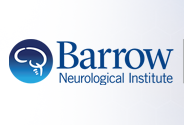Characterization of Anatomical Landmarks for Exposing the Internal Carotid Artery in the Infratemporal Fossa Through an Endoscopic Transmasticator Approach: A Morphometric Cadaveric Study
Document Type
Article
Abstract
BACKGROUND: The Eustachian tube and sphenoid spine have been previously described as landmarks for endonasal surgical identification of the most distal segment of the parapharyngeal internal carotid artery (PhICA). However, the intervening space between the sphenoid spine and PhICA allows for error during exposure of the artery. In the present study, we have characterized endoscopic endonasal transmasticator exposure of the PhICA using the sphenoid spine, vaginal process of the tympanic bone, and the "tympanic crest" as useful anatomical landmarks. METHODS: Endonasal dissection was performed in 13 embalmed latex-injected cadaveric specimens. Two open lateral dissections and osteologic analysis of 10 dry skulls were also performed. RESULTS: A novel and palpable bony landmark, the inferomedial edge of the tympanic bone, referred to as the tympanic crest, was identified, leading from the sphenoid spine to the lateral carotid canal. Additionally, the vaginal process of the tympanic bone, viewed endoscopically, was a guide to the PhICA. The sphenoid spine was bifurcate in 20% of the skulls, with an average length of 5.98 mm (range, 3.9-8.2 mm), width of 5.81 mm (range, 3.0-10.6 mm), and distance to the carotid canal of 4.48 mm (range, 2.5-6.1 mm). CONCLUSION: The sphenoid spine and pericarotid space has variable anatomy. Using an endoscopic transmasticator approach to the infratemporal fossa, we found that the closest landmarks leading to the PhICA were the tympanic crest, sphenoid spine, and vaginal process of the tympanic bone.
Medical Subject Headings
Adipose Tissue; Anatomic Landmarks; Cadaver; Carotid Artery, Internal (anatomy & histology); Eustachian Tube (anatomy & histology); Fascia; Humans; Infratemporal Fossa (anatomy & histology); Mandibular Nerve (anatomy & histology); Meningeal Arteries (anatomy & histology); Nasal Cavity; Natural Orifice Endoscopic Surgery (methods); Neuroendoscopy (methods); Parapharyngeal Space (anatomy & histology); Pterygoid Muscles (anatomy & histology); Sphenoid Bone (anatomy & histology)
Publication Date
11-1-2019
Publication Title
World neurosurgery
E-ISSN
1878-8769
Volume
131
First Page
e415
Last Page
e424
PubMed ID
31376554
Digital Object Identifier (DOI)
10.1016/j.wneu.2019.07.185
Recommended Citation
Li, Wei; Chae, Ricky; Rubio, Roberto Rodriguez; Benet, Arnau; Meybodi, Ali Tayebi; Feng, Xuequan; Huang, Guanglong; and El-Sayed, Ivan H., "Characterization of Anatomical Landmarks for Exposing the Internal Carotid Artery in the Infratemporal Fossa Through an Endoscopic Transmasticator Approach: A Morphometric Cadaveric Study" (2019). Neurosurgery. 2119.
https://scholar.barrowneuro.org/neurosurgery/2119


